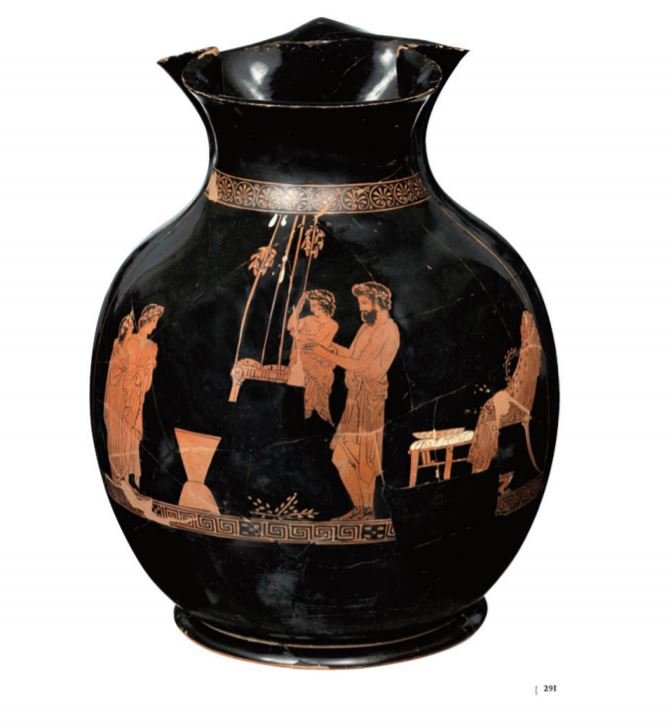One of the perils of the Athens Museum – as with all large collections of antiquities – is that you can easily become overwhelmed with their size and the number of things to see.
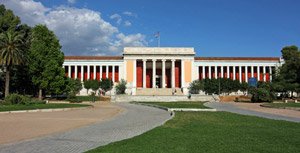
National Archaeological Museum
The good news is that the National Archaeological Museum is much better organised than it used to be. When I first visited it in the 1980’s, it wasn’t the best experience I’d ever had in a museum. Many of the displays were incomplete, some were wrongly labeled, and they’d run out of leaflet guides. But it’s been vastly improved, and even though you probably need a few visits to really appreciate it, your first visit will be very enjoyable.
When you visit…
Get a floor plan or guide so you know where you’re going and what you’re looking at. If you don’t, you’ll just wander around aimlessly and not enjoy your visit.
Go back in time
The range of art and artifacts you’ll find is amazing. They stretch from Neolithic items from 8000 BC, through Hellenistic and down to Roman times. Athens museum has the greatest collection of Greek antiquity in existence, and when you leave after your first visit you won’t disagree!
Some of the highlights
There’s so much to see, and so many treasures, that the following are just a few of the items to look out for.
The mask (of Agamemnon?)
The German archaeologist Schliemann uncovered this and other gold treasures at Mycenae. He believed it was the death mask of Agamemnon, who led the Greeks in their war against Troy. Experts today dispute this. It’s thought the mask is older, but the name has stuck.
You can see other treasures, such as bronze daggers, with their blades encrusted with gold and silver. If you’ve visited or plan to visit Mycenae, these treasures in the Athens museum help to bring the whole Mycenaean civilization together.
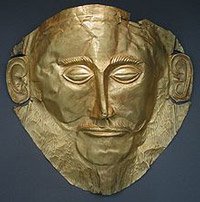
Santorini frescoes
These frescoes are some of the most magnificent illustrations from the ancient world. They were discovered in the 1970’s by Professor Marinatos in the Minoan city of Akrotiri on the Aegean island of Santorini (Thera). Although there is some damage, the frescoes are in remarkably good condition for their age.
Together with the ceramics from the island, they give a fascinating view of life as it was in about 1600 BC.
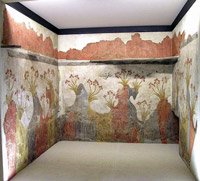
The Artimision Poseidon (or is it Zeus?)
This is a bronze statue which was recovered from the sea off Cape Artemision, situated on the north of Euboia.
The statue originally held something in its right hand, and that ‘something’ was thought to be a trident, which would make this a statue of Poseidon, the god of the sea.
Recently however, studies have led experts to propose that the statue could actually be of Zeus in the act of hurling a thunderbolt.
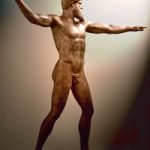
The grave stele of Hegeso
This is one of the best preserved grave stelae from Classical Athens. The deceased woman looks sadly at the jewellery box held by her maid. The workmanship is believed to be that of the famous sculptor Kallimachos.
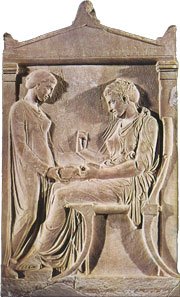
If you plan your visit, and allow enough time to see the sections which interest you, your visit to this Athens museum can become one of the highlights of your stay in Athens.
If your interest in the National Archaeological Museum is not satiated there is a tremendous volume of 464 pages that you can view or download from the Latsis Foundation. Full of photos with explanations and history.
